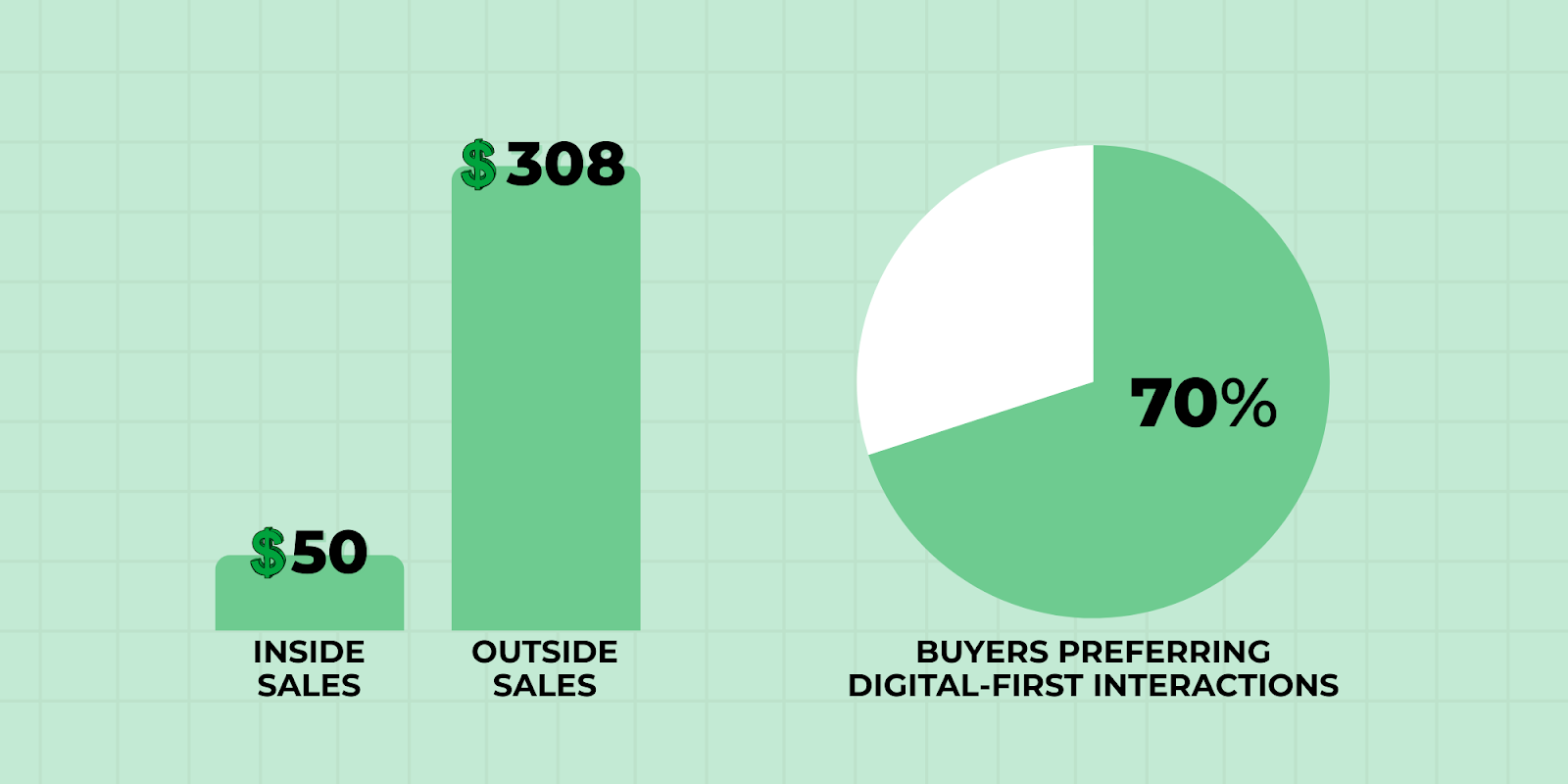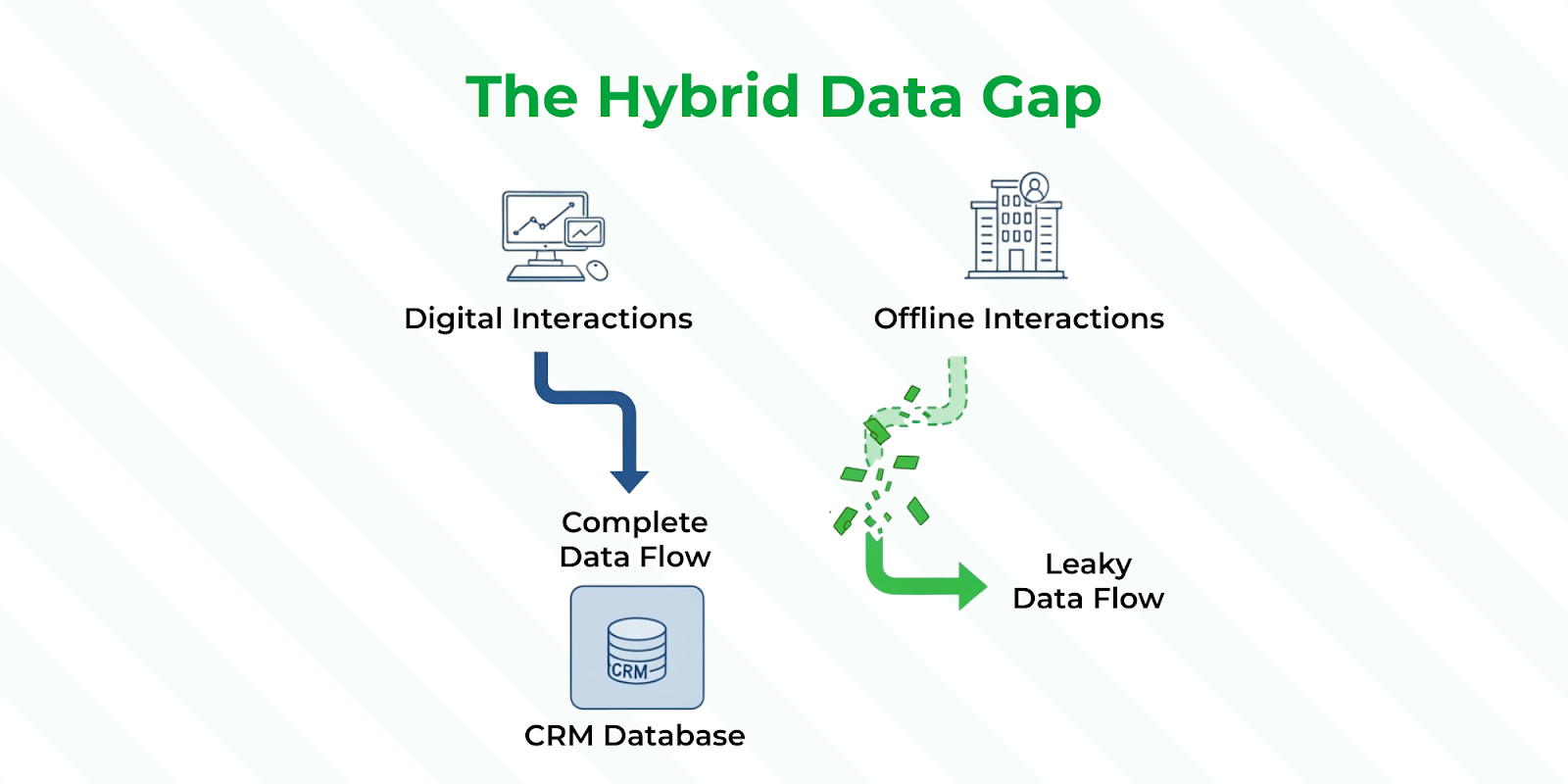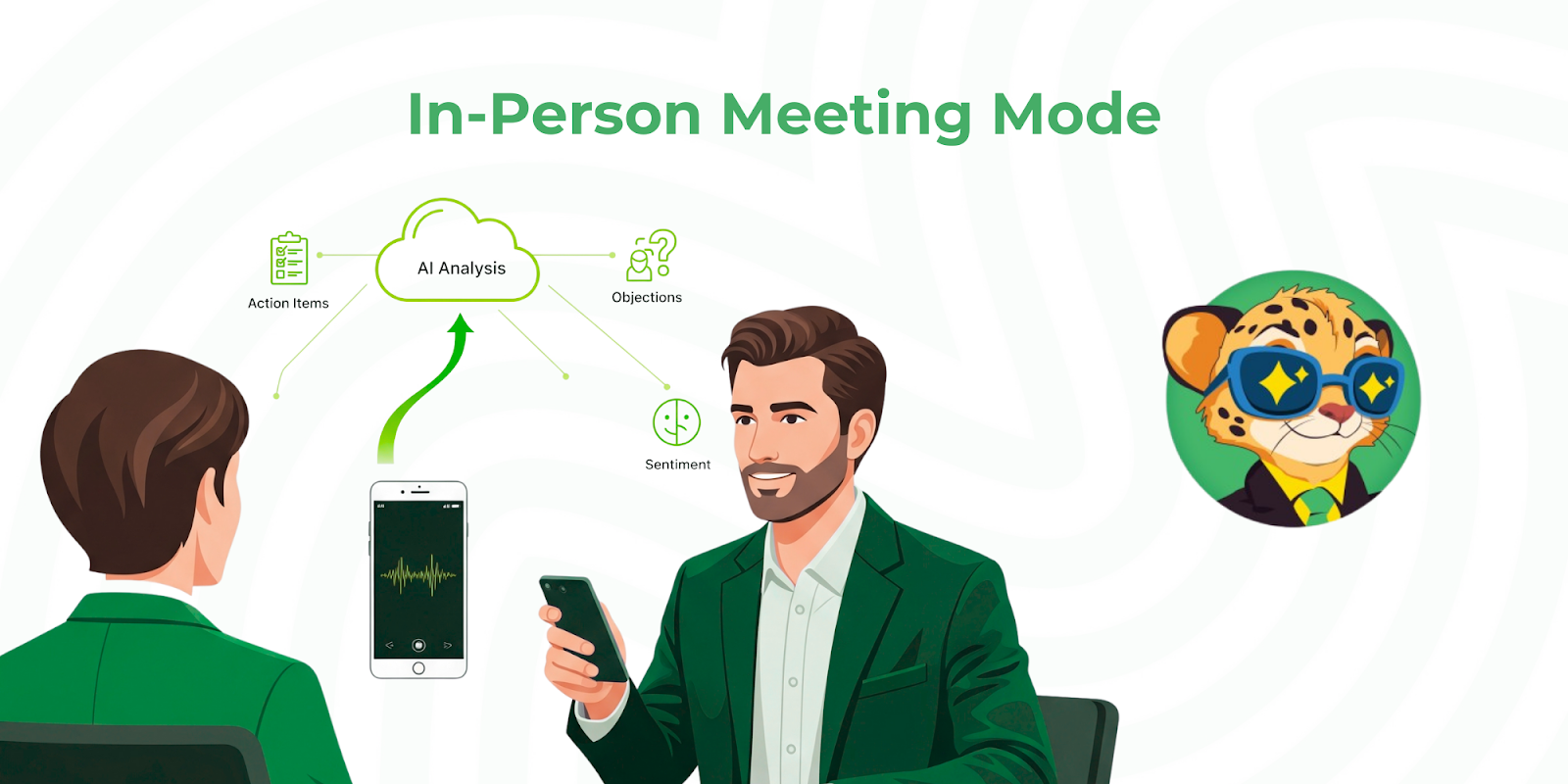Introduction: Why Inside Sales is Now the B2B Growth Engine
In 2025, the debate over the best go-to-market strategy is officially over. Over 80% of B2B organizations now use inside sales as their primary way to generate revenue. What began as a niche tactic has become the core of the modern business engine. This dominance isn't a short-term trend but a fundamental change in the B2B sales process, driven by economic pressures and a permanent shift in how buyers think.

What is Inside Sales?
Inside sales is the modern practice of selling products and services remotely, where sales professionals use digital tools like phones, email, and video conferencing instead of traditional face-to-face meetings. Distinct from scripted telemarketing, inside sales involves highly skilled professionals who manage complex, multi-touch sales cycles, building strong client relationships and closing deals with a sophistication that rivals traditional field sales.
The Driving Forces: Economics and Buyer Behavior
The rise of inside sales is fueled by two main drivers:
• Cost advantage: An outside sales call can cost six times more than an inside sales call. Studies estimate ~$308 per in-person visit compared to ~$50 for a remote one.
• Buyer preference: Modern B2B decision-makers favor digital-first interactions. Around 70% of buyers do not want an in-person meeting, and 78% of deals begin with a cold email or call.

The global pandemic accelerated this trend, proving that even high-value, complex deals could be closed without a single handshake. This has cemented virtual selling as the new normal.
Inside Sales vs. Outside Sales: Key Differences
The old 'inside vs. outside' sales debate is fading. While traditional differences still exist, remote, high-volume interactions versus in-person, high-touch relationships, the lines have blurred for good. In today's sales world, even dedicated field representatives spend much of their time selling remotely.
In fact, they use the same digital tools as their inside sales colleagues. The modern goal is not to choose one model over the other, but to build a unified, hybrid strategy that uses the strengths of both.
The table below breaks down the differences between the two:
The Biggest Challenge of Hybrid Sales: Missing Data
This evolution, however, has created a new and serious problem: the hybrid data gap. The digital interactions of inside sales teams—online meetings, emails, and call recordings- are captured and analyzed. But the crucial conversations that happen offline often disappear. For example, insights from a lunch meeting or a conference room session are frequently lost. They end up as scattered notes or incomplete CRM entries. This creates a dangerous blind spot for sales leaders.
An organization cannot be truly data-driven if its most strategic conversations are missing from its analysis. This gap has serious consequences. It leads to coaching sessions based on an incomplete picture of a rep's performance. It also results in forecasts that miss critical risk signals discussed offline. The problem is bigger than a messy CRM; it undermines the entire sales intelligence function.

To fix this, a new class of technology is needed. Next-generation AI copilots are pioneering features designed for this hybrid reality. The Pepsales AI Copilot, for example, offers an 'In-Person Meeting Mode.' This feature allows a field rep to record an offline conversation and upload it. The AI then transcribes and analyzes it just like a virtual call.
By letting the user map speaker roles, like 'Buyer' and 'Seller', the system intelligently pulls out objections, action items, and sentiment. This ensures 360-degree data coverage, closing the hybrid data gap and turning a major weakness into a source of competitive intelligence. Read more about the In-Person Meeting Mode.

How to Build a High-Performance Inside Sales Team
A high-performance inside sales organization is not a single entity. Instead, it is a carefully designed system of specialized roles, clear processes, and integrated technologies. In this environment, success is never an accident, it's the direct result of a disciplined, operational approach to generating predictable revenue.
Structure Your Team with Specialized Roles
The foundation of this model is specialization, a concept sometimes called the "Fordism" of sales. Instead of using generalist "salespeople," top teams are made of specialists. Each person masters a specific stage of the sales cycle. These roles typically include:
- Sales Development Representatives (SDRs) or Business Development Representatives (BDRs): These are the top-of-funnel experts. They focus on qualifying inbound leads and finding new opportunities through outbound prospecting.
- Account Executives (AEs): Once a lead is qualified, it goes to an AE. The AE is responsible for discovery, product demos, managing the full sales cycle, and closing the deal.
- Customer Success or Account Managers: After the sale, these specialists focus on client onboarding, retention, and finding opportunities to expand the account.
Unify Your Team with Process and Technology
While highly efficient, specialization makes the handoff between roles a critical weak point. To prevent buyers from repeating information, a documented sales playbook is essential. It establishes a defined, repeatable process that ensures consistency, simplifies onboarding, and is vital for predictable revenue.
This process is underpinned by a core technology stack, with a CRM acting as the single source of truth. This is supported by collaboration tools like Slack and, most importantly, a seamless alignment between sales and marketing to ensure a steady flow of high-quality leads.
4 Core Challenges Facing Inside Sales Teams in 2025
While the inside sales model is a powerful engine for growth, its relentless pace and metric-driven nature have created a new set of systemic challenges. The pressure to perform has pushed many teams to a breaking point. In 2025, the most successful organizations are proactively solving these four interconnected crises.
1. The Admin Tax - Drowning in Data Entry
Sales representatives are hired to build relationships and close deals, yet they often spend a third of their time on administrative work. This “admin tax” is the endless cycle of manual note-taking, updating CRM fields, and writing follow-up emails. It is a silent killer of productivity and morale, because every hour a rep spends on data entry is an hour they are not selling, making it a primary driver of missed quotas.
2. The Execution Gap - When Good Playbooks Go Bad
Companies invest heavily in sophisticated sales methodologies like MEDDPICC or BANT, but there's a huge gap between theory and practice. It is nearly impossible to ensure reps consistently follow these complex frameworks on high-pressure, live sales calls. This “execution gap” between strategy and real-world application leads directly to poorly qualified pipelines, stalled deals, and inaccurate forecasting.
3. The Personalization Paradox - The Struggle for Relevance at Scale
Modern B2B buyers have zero tolerance for generic outreach; they expect hyper-personalization that proves a seller understands their unique challenges. At the same time, inside sales reps are under immense pressure to hit high activity metrics. This creates the “personalization paradox”: the demand for deep personalization conflicts with the demand for high volume. When time is short, deep research is often sacrificed. This leads to low engagement and a failure to build trust.
4. The Quota Attainment Plateau - Why Most Reps are Missing the Mark
The data from the front lines is concerning. In competitive sectors like SaaS, some reports suggest that as few as 41% of reps consistently hit their quota. This is not due to a lack of talent or effort. Instead, it is the direct result of the other three crises. When a sales team is buried in admin work, fails to execute its sales methodology, and struggles to personalize outreach, missing quota becomes inevitable. This plateau is a symptom of a systemic breakdown in the modern inside sales model.
The Copilot Revolution: The Solution to the Modern Sales Crisis
The solution to these deep-rooted crises is not to ask reps to simply work harder. It is to help them work smarter, augmented by artificial intelligence. An AI Sales Copilot is a real-time virtual assistant that works alongside sellers to automate low-value tasks and provide critical intelligence when it matters most. It doesn’t replace human expertise; it multiplies it, allowing sellers to focus on what they do best: building relationships and closing deals.
By integrating directly into the sales workflow, tools like the Pepsales AI Copilot offer a direct solution to each of the crises hurting team performance.
How an AI Copilot Solves the 4 Core Sales Crises
1. Eliminating the Admin Tax
An AI Copilot acts as an automated scribe for every sales conversation. The Pepsales AI Copilot automatically records, transcribes, and creates smart summaries of every meeting. Critically, they then sync these notes, action items, and other key insights directly to the correct opportunity in the CRM. This single feature saves reps hours of manual data entry each week. It effectively eliminates the admin tax and frees them to focus on selling.
2. Closing the Execution Gap
AI copilots embed your sales playbook directly into every live call. Using an on-call teleprompter, the Pepsales AI Copilot provides reps with dynamic, real-time discovery questions based on your chosen methodology (like MEDDPICC or BANT). When a buyer raises an objection, the system instantly provides proven responses, ensuring every rep—regardless of experience—executes the sales process like a top performer.
3. Cracking the Personalization Paradox
The copilot also streamlines pre-call preparation. The Pre-Call page in Pepsales AI Copilot provides an AI-generated buyer summary and suggests tailored discovery questions. This allows a rep to prepare for a highly relevant, personalized conversation in minutes, not hours. As a result, it resolves the conflict between the need for personalization and the pressure for high activity.
4. Breaking the Quota Plateau
By systematically solving these underlying issues, Pepsales AI Copilot directly impacts bottom-line results. Reps have more time for selling, the playbook is executed consistently, and interactions can be personalized at scale. Consequently, organizations see real improvements in key metrics. They can achieve win rate increases of up to 50%, shorter sales cycles, and more accurate forecasting.
The table below provides a clear summary of how Pepsales AI Sales Copilot directly addresses the most pressing challenges in inside sales.
Future of Inside Sales: What to Expect Next
Inside sales has evolved from a cost-saving tactic into the primary engine for B2B growth. This evolution, however, has created a new set of challenges—the admin tax, the execution gap, and the personalization paradox, that cannot be solved by simply increasing activity.
Winning in 2025 is no longer about more dials; it's about augmenting every seller with the intelligence to execute flawlessly, personalize deeply, and reclaim their time for what matters. The Pepsales AI Copilot is not a glimpse into the future of sales; it is the new standard for performance, available today. Organizations that embrace this shift will build a resilient, high-performance sales engine. Those that do not risk being outmaneuvered by competitors who have already equipped their teams with the intelligence to win.





.avif)




.avif)
.avif)
